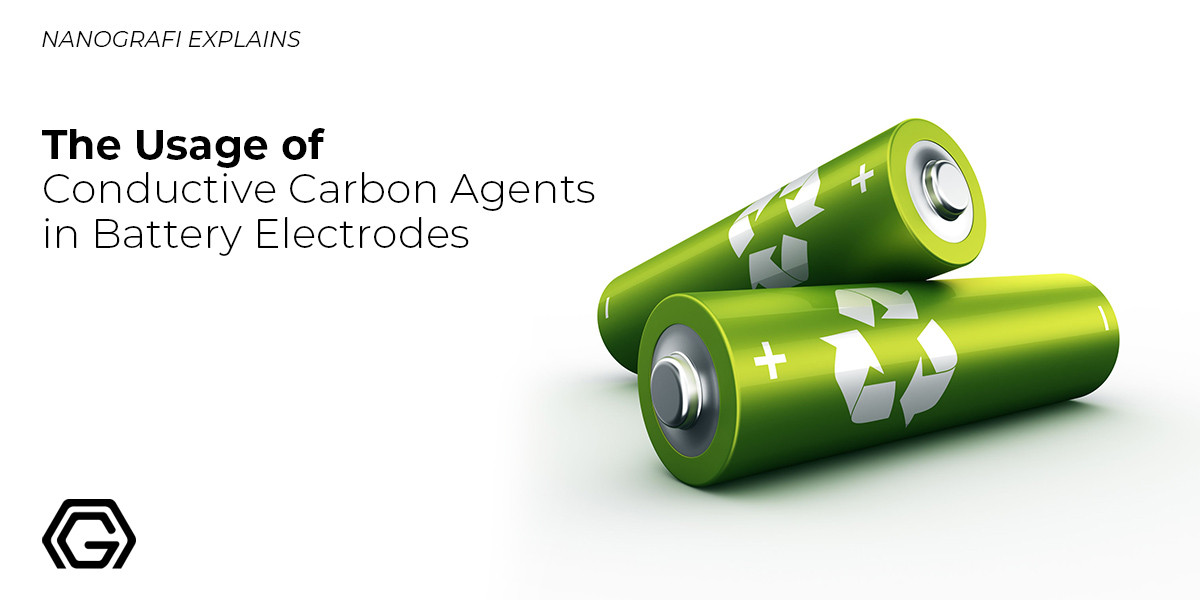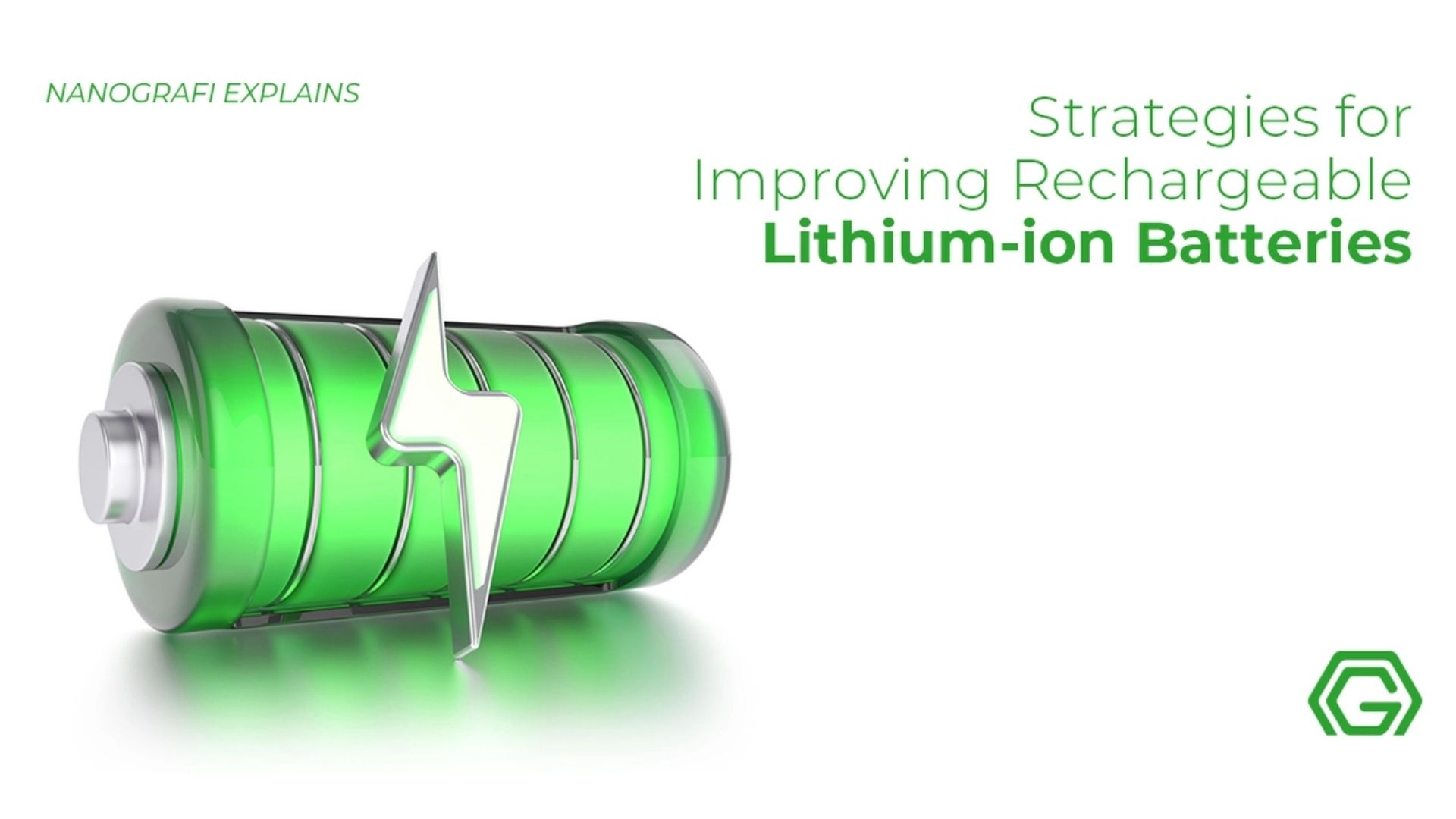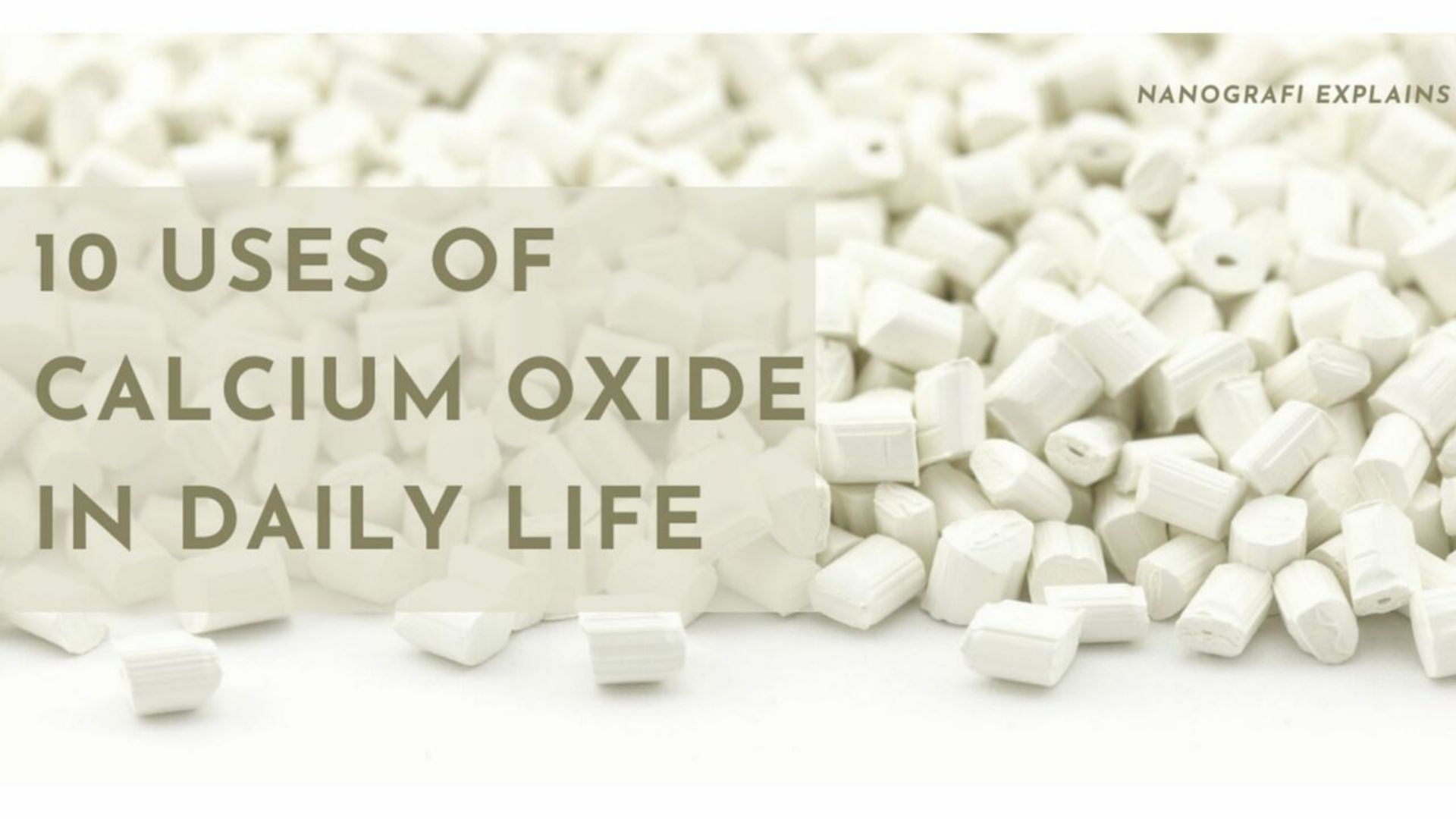The Usage of Conductive Carbon Agents in Battery Electrodes
Electrodes are the electrical conductors which are responsible for building up the nonmetallic part of a circuit. These may include a semiconductor, a vacuum, or air. Electrodes are the most integral part of a battery and are built up with a huge variety of materials all of which vary from battery to battery.
The two basic types of electrodes are cathodes and anodes. Cathodes are responsible for carrying out the negative charges while anodes are responsible for carrying out the positive charges. A battery is made fully functioned by the proper functioning of these electrodes however when conductive carbon agents get involved, they also keep the battery functioning in a rather better way.
Introduction
An electrode is an electric conductor which holds the responsibility of forming contact with nonmetallic parts of a circuit which may include semiconductors, electrolytes, and vacuum. These are an integral part of a battery and can consist of different types of materials that solely depend upon the battery. Electrophore is known as the earliest version of an electrode which was introduced by Johan Wilcke so that static electricity can be studied.
Anode and Cathode in Electrochemical Cells
As discussed earlier, electrodes are the most important part of any type of battery. The world's first electrochemical battery was known as the voltaic cell which was invented by Alessandro Volta and was probably named after him. This voltaic cell consisted of copper and zinc electrodes which were rather differentiated by the paper disks soaked in brine. Fluctuations were observed in the voltage that was being provided by the voltaic cell so it did not prove to be very practical.
However, the very first practical battery was known as the Daniell cell named after John Frederic Daniell who invented it in 1839 while using zinc and copper electrodes as a combination to inculcate the proper functioning of the Daniell cell. After that a lot of batteries have come into existence by the use of different types of materials however all these batteries are still being functioned on the basis of two electrodes, divided into two categories, anodes, and cathodes.
Anode
An anode is an electrode that is responsible for the transferring of conventional current from the electrical circuit into the non-metallic cell. Electrons are then moved to the other side of the battery. The Discovery of the electron is made first and the flow of current is discovered later on which differentiates the flow of current and electrons.
It was Benjamin Franklin who explained that electrical flow moves from the positive to the negative end of the electrode. Electrons are responsible for flowing away from the anode whereas conventional current moves towards it. In the end, it was concluded that the anode is responsible for carrying the negative charge and the reaction that takes place on the anode is the oxidation reaction.
Cathode
A cathode is the positive electrode and is in most ways the exact opposite of an anode. This means that the electrons will flow from the electrical circuit into the non-metallic part of the electrochemical cell. However, unlike the anode, the reaction that takes place at the cathode is known as the reduction reaction and is thus absorbed by the oxidizing agent. The cathode is equally important for the proper functioning of a battery just like the anode is because both of these go hand in hand and if the functioning of one alters, the entire battery gets affected.
Primary cell
Primary cells are the batteries that are built to be utilized for only one time and they then get discarded. The reason is that the electrochemical reactions which happen to be at electrodes are certainly not reversible. The most basic example of a primary cell is known as the discardable alkaline battery which is most commonly used in flashlights. In these cells, zinc is used as an anode and manganese oxide is used as a cathode as a result of which the formation of ZnO takes place.
Following are the half-reactions that take place:
Zn(s) + 2OH−(aq) → ZnO(s) + H2O(l) + 2e− [E0oxidation = -1.28 V]
2MnO2(s) + H2O(l) + 2e− → Mn2O3(s) + 2OH−(aq) [E0reduction = +0.15 V]
Whereas the overall reaction is as following:
Zn(s) + 2MnO2(s) ⇌ ZnO(s) + Mn2O3(s) [E0total = +1.43 V]
ZnO has a common feature of clumping and if it is recharged again, it gives out a rather less efficient discharge. The possibility of charging these batteries is present but keeping in mind the safety measures, it is advised to not go for it which is advised by the manufacturer. There are other primary cells as well which are known as zinc-carbon, zinc-chloride, and lithium iron disulfide batteries.
Secondary cell
Secondary cells are the opposite of primary cells and thus can be recharged. The first secondary cell to ever exist was invented in 19859 by a French named Gaston Plante and was known as the lead-acid battery. These types of batteries are the most used batteries even in today's world as well including automobiles too. The cathode of these batteries is made up of lead dioxide (PbO2) whereas the anode is made up of solid lead. There are a lot of other rechargeable batteries as well which take part in building up the industries and markets where lithium-ion batteries are the most used and common ones.
Manufacturing
Lithium-ion batteries being one of the most used batteries have a higher rate of production and the steps that go into the production of electrodes of li-ion batteries are as follows:
All the constituents of an electrode are mixed in a solvent. The context of this mixture is prepared in such a way that the electrodes and their performances are enhanced and their components are as follows:
- Active electrode particles.
- Binder which actively binds and contains the active electrode particles.
- A conductive agent which enhances the conductivity of the electrodes.
This mixture that is formed is known as the electrode slurry.
- The electrode slurry works in such a way that it gets coated on a conductor which then works as a current collector preferably in the electrochemical cell. The typical current collectors are copper which is used for the cathode and aluminum which is used for the anode.
- When slurry gets applied to the conductor, the first step is to wait for it to dry, and then it gets pressed to attain the thickness that is required.
To get more information about Rechargeable Lithium-Ion Batteries,
you can read our blog post.
Structure of the Electrode
The entire structure of the electrode is formed by the given selection of constituents whereas the final efficiency is gained by what lies in the internal structure of the electrode. Following are some of the most important factors for the internal structure which is the key factor that determines the electrode and its performance:
- The active material and the conductive agent must be clustered. The most basic step in the proper functioning of the electrode slurry is to spread out evenly inside the electrode so that the slurry can perform its tasks diligently.
- Conductive material must be evenly distributed over the active material because this confirms that the conductivity of the electrode is optimal.
- Current collectors and the electrodes must exhibit adherence among them. This confirms that the electrode will not get dissolved in the electrolyte.
- The density of the active materials holds a great deal of importance. There should be a maintained balance among the active material, binder, and conductive agent. The slurry is responsible for keeping the density of the active material as high as possible without causing any alteration in the working of the binder and the conductive agent.
Influence of Electrodes’ Properties
All these properties are capable of being influenced while the production of electrodes in a variety of ways. However, as explained earlier formation of electrode slurry is the most important step which goes in the manufacturing of electrodes that is why all the important properties of electrodes are comprised of electrode slurry. Hence, electrode slurry must be as homogeneous as possible because it holds a great deal of importance for the proper functioning of electrodes.
Electrodes in Lithium-Ion Batteries
Modern applications of electrodes can be found in lithium-ion batteries. Lithium-ion batteries are a prime example of a secondary cell as it is a rechargeable form of battery. It has the capability of acting as an electrolytic as well as a galvanic cell. In these batteries, lithium ions take the place of solute in the electrolyte which then gets dissolved in the organic solvent. The first study of lithium electrodes was conducted in 1913.
Cathodes
The cathode present in li-ion batteries consists of an intercalated lithium compound which is a layered material is having multiple layers of molecules which are made up of lithium and some other elements. One of the most common elements which are responsible for making up the most molecules is cobalt and the other one is manganese. However, a major portion of this selection depends upon the type of battery involved and how the battery makes it work as the elements involved get adapted by the battery.
Characteristics of the Electrode cell
In a 3-electrode cell, an auxiliary electrode, which is also known as a counter electrode; is only utilized for making a connection with the electrolyte so that one can apply current to the working electrode. Usually, an inert material like graphite or noble metal makes up the counter electrode as it keeps it from being dissolved.
Applications of Conductive Carbon Agents in Battery Electrodes
Lithium-ion batteries
Lithium-ion batteries, also known as Li-ion batteries, when compared to the other rechargeable batteries like Ni-MH batteries, Ni-Cd batteries, and lead-acid batteries, possess long cyclic life, high energy density, and high voltage. Thus, the eyes of various researchers have been attracted to it and that's why since their birth in the early 1990s, they have developed very fast. There has been a fast expansion of the lithium batteries industry, as they are displaying the portable battery industry's largest segment now and dominating the camera power source industry, cell phone, and computer. Large-scale Li-ion batteries for EV (electric vehicles) or HEV (hybrid electric vehicles) are now on the market. In 2009s end, BYD E6 EV showed up on the market when it loaded large-scale lithium-ion batteries according to the reports.
Rocking chair batteries
Visually known as the rocking chair batteries, the Li-ion batteries work on a principle that can be explained as follows. The lithium ions break away from the cathode when they charge, then they settle in the anode by flowing through the electrolyte, however, the electrons that are made from the movement of the lithium ions, go through the external circuit. The electrons and the lithium ions move in opposite directions when they discharge. Therefore, the flow of both the electrons and the lithium ions should be allowed by the Li-ion batteries' electrode system. It should also be an excellent electronic conductor and an ionic conductor. Usually, the cathode active materials are micro-sized materials that possess low electronic conductivity in 10-3~10-9 Scm-1 range.
Conductive percolation network
There is a routine addition of the conductive additives to the cathode active materials for forming a conductive percolation network. Cathode active materials' low electronic conductivity is compensated by the conductive network. It also increases the capacity of the battery which makes it capable of fast charging and discharging, and it also maintains the cathode's electronic conductance during the charge-discharge cycles. The anode active materials have relatively high electronic conductivity and they are microsized materials too. But during the charging and discharging cycles, they repeatedly expand and shrink.
Cycling process
The anode active materials will separate each other after several cycles, while some will turn into the 'dead' active materials. After various charge-discharge cycles, the anode's capacity and electronic conductance will then see a rapid decrease. Therefore, usually during the charge-discharge cycles, there is an addition of the conductive additives for keeping their electronic conductance. Moreover, electrolytes are absorbed and retained by the conductive additives, allowing intimate contact between the active material and the lithium ions. In short, keeping and increasing the electrode's conductance is a function of the conductive additives, whereas the other function is absorbing and retaining electrolytes, which allows intimate contact between the active materials and the lithium ions.
To get more information about 10 Uses of Calcium Oxide in Daily Life,
you can read our blog post.
Conductive additives in the Cathode
High ionic and electronic conduction should be possessed by the lithium-ion batteries' ideal cathode. The cathode's electronic conductance determines the electronic conduction. The ionic diffusibility determines the ionic conduction as it is related closely to the pores that are present in the cathode. The electrolyte solution can be absorbed and retained by the porous structure, particularly mesoporous structure, enabling an intimate contact between the cathode active material and the lithium ions. Moreover, during the charge and discharge cycles, there is repeated expanding and shrinking of the cathode active materials. Thus, another conductive additive's role is in keeping the constant conductance during the charge-discharge cycles.
Conductive additives Functions
Therefore, the following can summarize the roles of the conductive additives in the cathode: (1) during the charge-discharge cycles, it maintains the cathode's electronic conductance, (2) electrolyte solution is absorbed and retained by it, enabling an intimate contact between the cathode active material and the lithium ions, (3) it improves the cathode’s electronic conductance. The conductive additives’ primary function in the cathode is improving the cathode’s electronic conductance.
Single Conductive Additives
Only one conducting material is contained by the single conductive additives. Fiber-like carbon and particulate carbon are included in them. Graphite, Super P, acetylene black, and carbon black are mainly included in the particulate carbon. Spherical primary particles are possessed by all of them. They form conducting networks that are dominated by the interparticle resistance’s degree which is determined by the interparticle contact’s degree.
Fiber-like carbon
Mainly carbon nanotubes and carbon fibers are included in the fiber-like carbon. Fiber-like carbons are tubes or fibers with over 100 the high aspect ratio. They form the conducting networks that are less sensitive toward inter-particle contact. High-aspect ratio additives are more effective to increase complete electronic conductivity for a given volume fraction. However, as compared to the particulate carbon, usually the fiber-like carbon is way more expensive. Therefore, in the Li-ion batteries, a conventional conductive additive is the particulate carbon.
Multiple Conductive Additives
In comparison to the single conductive additives, the benefit of 2 or more than two conductors can be taken by the multiple conductive additives. And hence the synergistic effects came into existence. Thus, some superiority is usually shown by the multiple conductive additives over the single conductive additives. There is an easy dispersion of the microsized graphite with the cathode active materials, however, no valid conductive network can be formed with a small dosage. Usually, a valid conductive network is formed when there is the addition of the nano-sized Super P or like. Then higher discharge capacity and enhanced cycle life are possessed by the cathode. Hong et al. and Cheon et al. did this study.
First conductor
Multiple conductive additives made of a first conductor are used by Cheon et al. with a specific surface area from around 200-1500 m2 g-1 and a second conductor with 100 m2 g-1 or less of a specific surface area. High energy density and low resistance are possessed by the composite cathode. Mesoporous carbon-containing multiple conductive additives are used by Zhang et al. for enhancing the LiCoO2 composite cathode's electrochemical performance.
Results
It was indicated by the results that as compared to the electrochemical performance of the cathode that was loaded with AB, the electrochemical performance (including the total internal resistance, the discharge voltage, and the discharge capacity) of multiple conductive additives loaded LiCoO2 composite cathode was better. Absorption and retention of the electrolyte solution by the mesoporous solution is the only possible mechanism, as it makes an interesting contact between the LiCoO2’s cathode active material and lithium ions because of its large mesopore-specific surface area.
Conductive additives in the Anode
Carbon materials like artificial graphite and natural graphite are the most commonly used anode active materials. As compared to the cathode active materials, high electronic conductivity is possessed by the carbon materials.
Other anode active materials
A larger expansion ratio and higher capacity are possessed by the other active materials like metal alloy and silicon. Conductive additives are also needed for keeping their electrochemical performances. Usually, some discharged capacity is possessed by the conductive additives. Discharged capacity can be improved by them along with the anode active material.
Particulate Carbon
The electrochemical performance of the graphitized mesophase carbon fiber (MCF) loaded with three particulate carbons like Ketjen Black, AB and GP were compared by Takamura et al. According to the results, the major factor to achieve a reliable anode of the lithium-ion secondary batteries for usage on a high rate is particulate carbon's dispersion in the anode. Anode performance enhancement because of the particulate carbon loading includes: (1) Increased anode active materials’ utilization efficiency, (2) increasing of the discharge rate, (3) increasing initial irreversible capacity to a huge extent, and (4) excellent increase of the cyclic life.
Fiber-like Carbon
A high aspect ratio is possessed by the fiber-like carbon. A valid conductive network can be formed by it and the anode active material can be fixed by it firmly to the collector. Fiber-like carbon possesses the capability to keep the composite anode's conductance constant during prolonged cycling. This issue got the attention of many researchers and they utilized the fiber-like carbon as conductive additives for enhancing the composite anode's electrochemical performance.
Conclusion
Conductive carbon agents which are responsible for the proper functioning of electrodes play a huge and integral role in the proper functioning of an entire battery because when electrodes function properly then automatically the performance of a battery is enhanced as well which in return increases the production and applications of those batteries. All the researches are proof of this owing to the excellent properties and applications of the conductive carbon agents.
To get more information, you can visit Blografi.
References:
https://cutt.ly/4HdjTRC
https://iopscience.iop.org/article/10.1149/1945-7111/ab6b1d
https://www.frontiersin.org/articles/10.3389/fchem.2020.00114/full
https://iopscience.iop.org/article/10.1149/2.0031411jes/meta
https://cutt.ly/4Hd1fjz
Recent Posts
-
Nanocomposites in Food Packaging
The utilization of nanocomposites in food packaging represents a significant advancement in the fiel …19th Apr 2024 -
What is the Difference Between 7075 and 6061 Aluminum Alloy?
When comparing 7075 aluminum alloy to 6061 aluminum alloy, it's essential to understand their disti …5th Apr 2024 -
Iron-Air Batteries: The Ultimate Guide
Iron-air batteries represent a significant breakthrough in energy storage technology, offering a sus …29th Mar 2024








